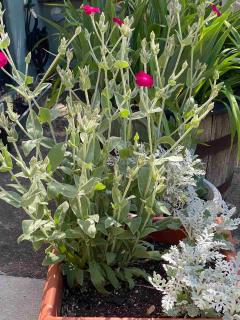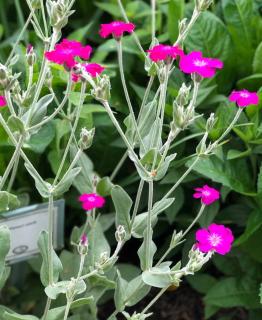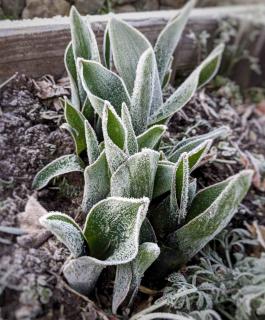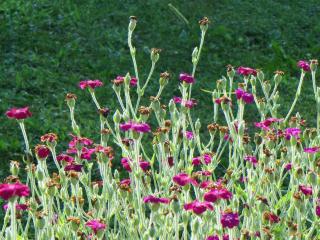

Rustic and stylish, the rose campion is a perennial that will enhance your garden with charm.
Key rose campion facts:
Latin name: Lychnis coronaria
Common name: Rose campion
Family: Caryophyllaceae
Type: perennial
Shape: clump-forming
Height: 18 to 28 inches (45 to 70 cm)
Planting density: 4 to 6 plants per 10 square feet (per m²)
Exposure: sunny
Soil: any type, but well-drained – Blooming: July→August.
Rose campion stands as a hardy perennial, adapting resiliently to various climates. Its crimson-red flowers stand in stark contrast against its velvety gray leaves, making it a unique and valuable addition to your flower beds.

Also excellent for growing in pots, thought it will grow slightly shorter.
But if you want it to truly thrive, give it a nice sunny spot and well-drained soil.

However, two actions stand out:
For propagating rose campion, you’ve got two choices. If patience defines you, seeding is great because it can give you as many plants as you with. But a faster method is division, though it can only give you from 2 to 6 plants depending on the size of the clump.
Here are your options:

Here’s how to proceed:
Smart tip: If you live where summers tend to be on the drier side, avoid dividing in the spring. Your plant might not have enough time to regrow roots before facing potential drought.
Garden rose campion boasts a resilience that stands up well against diseases. As for pests, snails and slugs might nibble on leaves. Thankfully, it’s not a big problem for this plant.

Pair rose campion in a flowerbed with Veronica spicata ‘Erika’ or ‘Incana’, Stachys byzantina, or even Nepeta x faassenii. You’ll unveil a gorgeous palette of grays dotted with shades of crimson, violet, and pink.